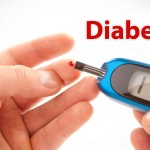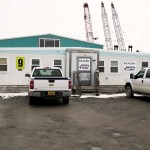As to be expected, WorkSaver is often asked questions about our Fit-for-Duty (FFD) testing process, policies and procedures. One question that occasionally comes up is regarding why WorkSaver evaluations perform an examination on the entire body of a return-to-work case rather than limiting testing to an injured body part. The following explanation is provided.
A FFD exam does not, or should not, test just the function of a body part, it tests how the injury directly and indirectly affects functional abilities to return to work safely. An impairment or injury to a body part can directly and/or indirectly have an impact on any number of work capacities. Recuperating from any injury can lead to deconditioning and can have a secondary impact on normal function of other areas of the body. For example, a hip replacement surgery may not only impact hip function, but can also have an adverse effect on the lower back, knee, and ankle. The person may also have become aerobically deconditioned during the rehabilitation period. We may also find signs of blood vessel blockage secondary to the surgery (e.g., claudication) that may need immediate medical attention. Functionally testing a person without clearing the entire body physically is risky and in my opinion, incompetent.
Using the example of a hip replacement, testing the function of the hip means assessing abilities to bear weight fully on the hip while walking, kneeling, squatting, carrying, pushing and pulling, and climbing stairs and ladders. Obviously, these work-simulated functional tests place exertional forces on many areas of the body, not just one hip. When conducting FFD tests we must ensure the person is physically cleared in all areas of the body to conduct functional capacities testing safely.
For this reason, the WorkSaver evaluation consists of two parts:
- A full physical exam to clear the person to safely undergo job-specific work simulation functional tests.
- Conducting job-specific work simulation functional tests.
This being said, an additional question may include what happens if we do find a medical problem unrelated to the hip surgery or involving a different body part or system? Well consider this. If during a Fit-for-Duty examination a medical condition such as excessive high blood pressure or pain noted in another body area is discovered during our exam that threatens the person’s ability to safely work, would we want to ignore that and only focus on the hip? Or would we prefer that we identify the medical problem that impacts safety and have the person acquire proper medical attention so that he/she can return to work safely? The laws make it clear that medical testing must be related to business necessity (e.g., safety on the job), and it is how the employer handles the test outcomes that must be carefully addressed. Performing medical tests which do not have direct relevance to function and safety must be avoided. For example, running a test for HIV would not be a business related medical test post hip surgery.
In summary, when a person returns to work following an injury or illness, it is imperative from a safety perspective, to ensure he/she is able to perform all the essential functions of the job safely with or without accommodations. How else does an employer identify the need for accommodations unless the person undergoes a thorough Fit-for-Duty examination to identify any impairments that threaten safety? The FFD examination will provide the employer with the basis for any accommodation needed. In response, the employer can conduct an effective interactive accommodation review based on objective data derived from the FFD test rather than based on speculation.
Reference:
Bunch, R. and Bardarson, T., WorkSaver Policies and Procedures Manual, 2017



